Censorship is carried out to prevent the public from reading perhaps a dangerous text. There are multiple reasons as to why a certain book is banned. Such reasons includes sexual content, profanity, racism, violence, drug and alcohol abuse, and nudity. However, there are books that, arguably, are good reads but are banned – books that can even shape a whole nation. Here are 30 influential banned books that shaped America.
Book: Adventures of Huckleberry Finn
Author: Mark Twain
Year of Publication: 1884
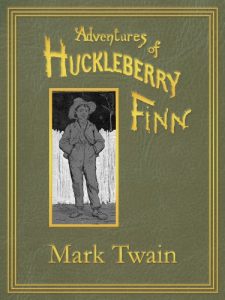
Adventures of Huckleberry Finn Book Cover
Considered as “trash” and “suitable only for the slums” by a Massachusetts’ librarian, it was the first book to be banned in the United States. Although widely known as one of Mark Twain’s finest novel, persistent challenges rose since its publication due to its repeated use of the word “nigger”.
White people, librarians, and those who didn’t like Twain’s language are the first to challenge its publication. Interestingly enough, it was originally banned for showing too good of a friendship between a white boy and a slave. Additionally, it was banned due to “bad language.” Words such as “sweat” instead of “perspiration” was considered as one example of bad language. Today, the book is banned because: (a) it said to be talking about a lower class of man, (b) the language is just too rough, (c) and the racial slurs are just too insensitive and offensive.
Freedom is the main theme of the novel in which it is the idea where America was founded on. It can be seen on the main characters, Huck and Jim. Huck who struggles for his freedom from his abusive father, and Jim on his fight against slavery.
Book: The Autobiography of Malcolm X
Author: Malcolm X, Alex Haley
Year of Publication: 1965
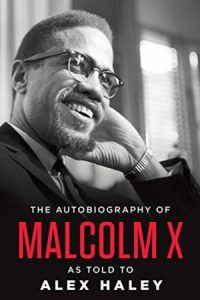
The Autobiography of Malcolm X Book Cover
Malcolm X, a prominent human rights activist, was assassinated on February 21, 1965. When he was about to address his Organization of Afro-American Unity at the Audubon Ballroom in Washington Heights, multiple men rushed at the stage and fired guns killing Malcolm X.
The Autobiography of Malcolm X relives the life of Malcolm X from his birth, through his fights and struggles, until his assassination. The book reads about Malcolm X’s ideologies on black pride, black nationalism, and pan-Africanism. Considered as dangerous and extreme, it was banned due to its ideas of black equality and power with violence. During its publication, America was considered to be white. Also, during this time, white America was afraid of revolutionary thinkers such as Malcolm X and Martin Luther King Jr.
Furthermore, the book is regarded as a “how-to-manual” for crime due to its “anti-white statements.” Nowadays, The Autobiography of Malcolm X is still considered as one of the most influential books gaining its spot in the ‘Books that Shaped America’ by the Library of Congress.
Book: Beloved
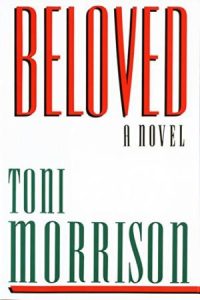
Beloved Book Cover
Author: Toni Morrison
Year of Publication: 1987
Beloved is a fiction novel written by Toni Morrison and inspired by the story of an escaped African-American slave who chose to kill her own children rather than to go back to the plantation they escaped from. However, she was only successful in killing her eldest daughter who is only 2 years old at the time. Her tombstone reads “Beloved” hence the book’s title.
Challenges were made by concerned parents from Virginia saying that the book was too extreme for teenagers. Their challenge was based for its “porn content” which involves scenes of violent sex, including a gang rape. This controversy led to the creation of House Bill 516. This bill created a policy that “notify[fies] the parent of any student whose teacher reasonably expects to provide instructional material that includes sexually explicit content.”
Furthermore, other challenges from the previous years wanted to pull the book out for its inappropriate topics of bestiality, racism, violence, murder, and sex. However, some challenges turned to be unsuccessful.
Book: Bury My Heart at Wounded Knee
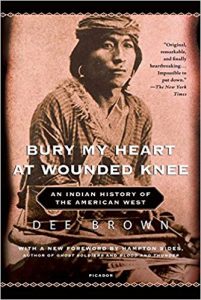
Bury My Heart at Wounded Knee Book Cover
Author: Dee Brown
Year of Publication: 1970
According to many readers, Bury My Heart at Wounded Knee is the history of the American west from the natives’ standpoint. The opening chapter of the book reads how increasing European settlers treated the natives with violence. The remaining chapters are the personal accounts of the Western Indians per tribe, per event, and per leader.
Bury My Heart at Wounded Knee depicts the systematic annihilation of West American Indian tribes. Due to this unsettling subject matter, a school district in Wisconsin banned the book. “If there’s a possibility that something might be controversial, then why not eliminate it,” said by the district administrator.
Book: The Call of the Wild
Author: Jack London
Year of Publication: 1903
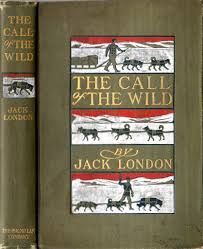
The Call of the Wild Book Cover
The story revolves around a large and powerful St. Bernard-Scotch Shepherd named Buck. The dog was originally owned by the rich family of Judge Miller. However, the dog was stolen and sold by the gardener’s assistant to finance his gambling addiction. From this point forward, Buck’s ownership jumps from one person to another. Buck’s last owner is an experienced outdoorsman named John Thornton, who took the dog from three abusive stampeders from United States. John took care of the dog earning its loyalty and devotion to him and always takes him to trips to pan for gold. Until one unfortunate day, John was murdered along with 2 of his friends. Later to find out that Yeehat Indians murdered John, Buck eventually kills the natives avenging John. Other Indian tribes know the legend of Buck as the “Ghost dog of Northland.”
The Call of the Wild is often misclassified as children’s literature since a dog is its main protagonist. However, the book has a dark tone that includes cruelty and violence. Jack London,the author, experienced Klondike Gold Rush himself where dogs like Buck were cheap and abused. This led some to criticize London for glorying or condoning animal abuse. Moreover, the killing of the Yeahat Indians was taken as a slam against all the native tribes.
The book was also banned in Italy, Yugoslavia, and was burned by Nazi Germany in the 1920s for being too radical.
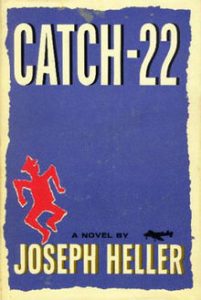
Catch-22 Book Cover
Book: Catch-22
Author: Joseph Heller
Year of Publication: 1961
Catch-22 follows Captain John Yossarian, a U.S. Army Air Force B-25 bombardier, on his efforts not to die in the madness of war. The book also looks into the experiences of Yossarian’s odd colleagues in their attempt to maintain their sanity while they serve in the military so that they may return home.
The book was banned due to its “indecent language.” Moreover, the book referred to women as “whores” several times adding to the reason why it was banned. Also, the characters are said to be sexist and racist.
Book: The Catcher in the Rye
 Author: J.D. Salinger
Author: J.D. Salinger
Year of Publication: 1951
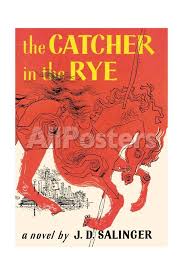
The Catcher in the Rye Book Cover
The Catcher in the Rye is a reference to poem entitled “Comin’ Thro the Rye” by Robert Burns. The Catcher in the Rye became the symbol for main protagonist, Holden Caulfield, which means to save children from losing their innocence. Since its publication, it has been popular among adults. But eventually, became famous among adolescent readers for its themes such as angst and alienation.
The book contains cuss words at multiple instances. Rarely is there a sentence without a cuss word. It was countlessly challenged due to its profanity alone. Additionally, the main protagonist uses God’s name in vain and does blasphemous act throughout the entirety of the book. Also, he also says inappropriate statements against minorities, women, and the disabled. Other reasons include sexual reference, prostitution, premarital sex, alcohol abuse, and violence.
Book: Fahrenheit 451
Author: Ray Bradbury
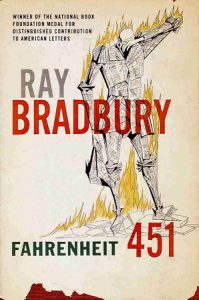
Fahrenheit 451 Book Cover
Year of Publication: 1953
The novel is set in a futuristic dystopian American city in which its citizens do not read books, enjoy nature, spend time by themselves, think independently, or have meaningful conversations. Instead, they allot their time doing unimportant activities like drive very fast, watch excessive amounts of television, and listen to the radio. Moreover, firemen start fires rather than putting them out. Guy Montag, the main protagonist, is a fireman who burns books.
Due to its seemingly offensive language, a school district banned the book. Furthermore, its concept of a “government that bans anything that offends its people” is another reason why it was banned.
Book: For Whom the Bell Tolls
Author: Ernest Hemingway
Year of Publication: 1940
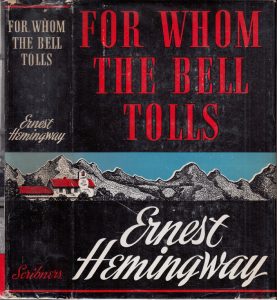
For Whom the Bell Tolls Book Cover
For Whom the Bell Tolls follows Robert Jordan, an experienced American dynamiter, through his mission in a civil war in Spain. He is tasked to destroy a bridge using dynamites to prevent enemy backups from responding to an upcoming attack. He later meets a young Spanish woman named Maria who was raped and had her parents killed due to the outbreak of the war. Robert successfully destroys the bridge. However, while he is escaping via a horse, it was hit by a bullet which tramples on his left leg. Knowing he should be left behind, he bids his goodbye to Maria.
The book is banned in the United Stated in 1941 for its “pro-communism” content. It contains references to Marxism and a Communist party slogan: “Hold out and fortify, and you will win.” Moreover, it graphically depicts the brutality of civil war through the thoughts and experiences of Robert Jordan. It was also banned in Turkey and was dismissed as “propaganda.”
Book: Gone with the Wind
Author: Margaret Mitchell
Year of Publication: 1936
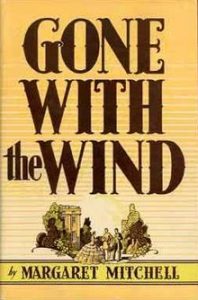
Gone with the Wind Book Cover
Gone with the Wind focuses on the love interests and business adventures of a southern belle named Scarlett O’Hara who lives in Tara. Scarlett desires to marry her neighbor, Ashley Wilkes. However, he was already engaged to her plain cousin from Atlanta, Melanie Hamilton. Upon knowing this, she marries Charles Hamilton, Melanie’s dull and timid brother hoping to hurt Ashley. Then the Civil War began. Unfortunately, Charles joined the army and died due to measles. Melanie tells Scarlett to grieve her husband in Atlanta. Amidst the war, she is trapped in Atlanta and needs money to rebuild Tara. Desperate for money, she asks help from Rhett Butler who is attracted to her but he was unable to help her financially. Instead she marries an Atlantan businessman, Frank Kennedy. Frank, wanting to avenge her, dies in the process. Now widowed again, Rhett did not waste any time and proposes to Scarlett who immediately agreed. Scarlett marries Rhett while still being in love with Ashley. They had a child, Bonnie Blue Butler but was later killed in a horse-riding accident. Scarlett later realizes that it is Rhett that she truly loves not Ashley. However, it is far too late because Rhett’s love for her has already died.
The book was heavily criticized due to its offensive depiction of African-American slaves in the 19th-century South. Slaves are quoted as “creatures of small intelligence” and “like monkeys or small children turned loose.” The book also shows a scene of marital rape when Scarlett was overpowered by Rhett but later apologized and blamed his drunkenness. Moreover, the use of profanity is one of the reasons it was challenged, such words are “damn”, “whore”, and “nigger”. One of the profane words was uttered in its famous line, “Frankly, my dear, I don’t give a damn.”
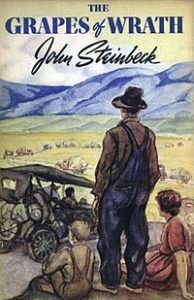
The Grapes of Wrath Book Cover
Book: The Grapes of Wrath
Author: John Steinbeck
Year of Publication: 1939
A newly paroled man, Tom Joad makes his way back to his family’s farm. Along the way, he meets a preacher he knew as a child, Jim Casy who has already gave up his calling. When they reached the farm, they find it and the surrounding farms deserted. Neighbors tell Tom and Jim that families including his have been “tractored” off the land and are heading to California to look for work. Moreover, neighbors tell Tom that his family is now staying with Uncle John. When they arrived, Tom finds the Joad family packing and getting ready for their trip to California. While they head to California, Grandpa died and followed by Granma.
Now in California, Tom gets into a heated argument with a deputy sheriff over whether workers should organize a labor union. The argument turns violent, Jim Casy knocked out the sheriff and is arrested. After getting released from jail, Jim organized workers and started strikes. Police later hunts him down and kills him in the process. Tom, seeing the whole thing, kills a police officer. Tom escaped the scene and hid in a cave.
Tom’s youngest sister, Ruthie accidentally reveals that his brother killed two men and is hiding in a cave. Fearing for his safety, Ma sends Tom away. The cotton season ends, and the rain season starts. Desperate from escaping the floods, the Joads head to a dry barn not far away. They find a young boy and his dying father, who is slowing starving to death. The novel ends with the scene: Rose of Sharon, now producing milk (after giving birth to a stillborn child), nurses and cradles the dying man to her breast.
Critics of The Grapes of Wrath accused John Steinbeck of exaggerating the situations in the Great Depression just to make a political view. However, in fact, Steinbeck underplayed these conditions. The book was dismissed as a ‘pack of lies’ and was tagged as ‘communist propaganda.’ Labeled as ‘libel and lie’, the book is banned in county libraries and schools in 1939. Moreover, other reasons why it is still banned are its contents of “vulgar language” and “sexual references.”
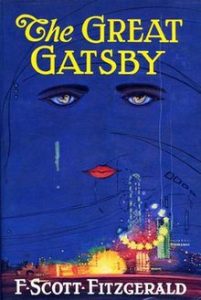
The Great Gatsby Book Cover
Book: The Great Gatsby
Author: F. Scott Fitzgerald
Year of Publication: 1925
The Great Gatsby is a story narrated by Nick Carraway. He tells the story of his neighbor Jay Gatsby’s rise to wealth and fortune who hosts lavish parties every Saturday night. He hosts these extravagant parties in an attempt to draw attention and impress Daisy Buchanan, a woman Gatsby met before and still loves but now is married to Tom Buchanan. Tom, a known adulterer, has a mistress named Myrtle Wilson (married to George Wilson). Tom later finds out Gatsby’s undisguised attraction to his wife, Daisy. Ultimately, Gatsby is killed by George Wilson after he falsely finds out that Gatsby was the one responsible for his wife’s death. Gatsby is fatally shot. The story ends with Nick arranging Gatsby’s funeral. Nick is disgusted for the people who surrounded Gatsby’s life but is unable to attend his funeral.
The Great Gatsby is a required reading in many American high schools but it was challenged due to its “bad language” and “sexual references.” Revisions of the book were made, in order to be more acceptable and appropriate for high school readers. Profanity is also included in the book, words such as “damn”, “hell”, and “son-of-a-bitch”. Concepts of adultery, partying, and alcohol also scared parents away.
The Great Gatsby was later recreated as a movie starring Leonardo DiCaprio.
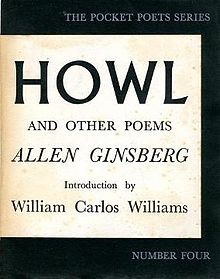
Howl Book Cover
Book: Howl
Author: Allen Ginsberg
Year of Publication 1956
Howl is a three-part poem, the first part starts with the poem’s famous line, “I saw the best minds of my generation destroyed by madness”. In reality, people who Ginsberg pertains to with “best minds” are not doctors, engineers, scientists, or lawyers but rather drug users, drop outs, world travelers, bums, musicians, political dissidents, and poets. The second part of the poem asks the question “What?” instead of “Who?”; what destroyed the best minds of his generation. Lastly, the third part asks the question “Where?” in which the poet addressed his close friend named Carl Solomon which he referred to as “Rockland.”
In the late 1950s, the book Howl and Other Poems was dismissed as obscene and controversial. Due to this, in an attempt to censor, the U.S. Customs Department confiscated 520 copies of the book and even arrested the publisher, Lawrence Ferlinghetti. However, instead of keeping the public from reading the book, the trial brought attention to the poem and became one of the most popular of its generation. References to drugs and gay sex were the main reasons why it was seized, and it was considered as subversive at the time, but it is more relevant nowadays than ever.
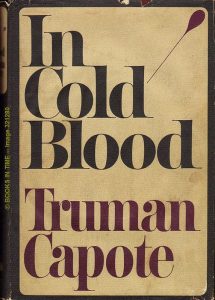
In Cold Blood Book Cover
Book: In Cold Blood
Author: Truman Capote
Year of Publication: 1966
In Cold Blood is a book about the true story of the murder of the Clutter family in Holcomb, Texas. The book was written as if it is like a fiction novel, complete with dialog. This is the first of the genre; was coined by the author as “New Journalism.” The book tells the story of the murder of the Clutter family which consists of Mr. and Mrs. Clutter and their two daughters. They were killed by Dick Hickock and Perry Smith, by shooting them to death without apparent motive.
The book was banned after a parent in Savannah, GA due to its content about sex, violence, and profanity but it was later reinstated. The murders were graphically depicted in the book. The book’s mature content was inappropriate to children, saying that it is “too violent for a young audience.” Their parents were just trying to protect their children from the harsh and brutal concept of murder.
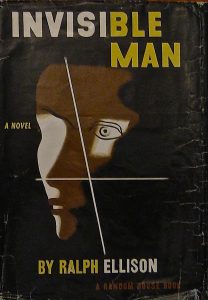
Invisible Man Book Cover
Book: Invisible Man
Author: Ralph Ellison
Year of Publication: 1952
The narrator of the book is an unnamed black man claiming to be “invisible”. He is not physically invisible but rather he was invisible as a result of the refusal of others to see him. He begins describing his living condition as an underground room with hundred of electric lights operated by power stolen from the city’s electric grid. The narrator later wins a scholarship to an all-black college, but in order to receive it, he must join a battle royal for the entertainment of the town’s rich white dignitaries. However, later in the story, he was expelled from the college by the college president when he showed a visiting rich white trustee the “underside of black life.”
The narrator later seeks work at a paint factory where he was appointed at the boiler room. Its chief attendant, Lucius Brockway, becomes paranoid and is suspects the narrator of trying to steal his position. Lucius attacks and tricks the narrator into setting an explosion in the boiler room and who was later hospitalized.
After getting discharged at the hospital, the narrator sees an eviction of an elderly black couple and makes an impassioned speech which influenced the crowd to attack the law enforcement officials. After giving the influential speech, he was confronted by the leader of “the Brotherhood”, Brother Jack and offers him to join the group to speak at rallies; to spread the word among the black community. The book returns to the present, stating that the narrator has grown tired of hiding from the world and wants to provide a voice for people with similar situation.
A parent from Asheboro, NC wrote a critique that spanned 12 pages, complaining about the language of book and its sexual content. “Not so innocent”, “filthier” and “too much for teenagers” are words from the parent describing the book. Moreover, a school board member was quoted saying, “I didn’t find any literary value”.
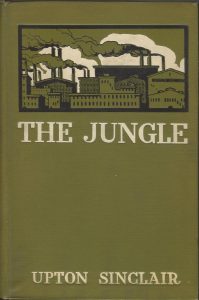
The Jungle Book Cover
Book: The Jungle
Author: Upton Sinclair
Year of Publication: 1906
The Jungle follows a Lithuanian family, including a newly-wed couple named Jurgis Rudkus and Ona Lukoszaite. They recently move to a dangerous area of Chicago known as Packingtown, in the hopes to find work and live the American Dream. The book describes the family’s difficulty in finding work and their struggles in the working area. Desperate for money, Jurgis turns to a life of crime and partners with Jack Duane (an acquaintance he met when he was jailed) to commit burglaries and muggings. Jurgis becomes distant to his own family but later reunited after finding a job as a porter and joins a socialist party.
The Jungle was burned by the Nazis due to its dangerous and purportedly socialist views. It was later banned in East Germany because it was inimical to communism. It was also banned in Boston, South Korea and Yugoslavia.
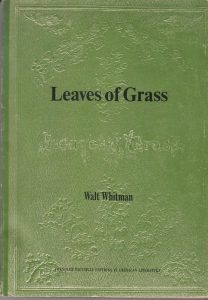
Leaves of Grass Book Cover
Book: Leaves of Grass
Author: Walt Whitman
Year of Publication: 1855
Leaves of Grass is a collection of poems written by Walt Whitman throughout his lifetime. Initially, it contained only 12 poems but the latest edition (the “deathbed” edition) contains over 400 poems. The book’s latest edition was published only months before the death of Whitman.
After its first publication, Walt Whitman was fired from his job at the Department of Interior after it was read by the Secretary of the Interior James Harlan and found it offensive. The book was greeted with thrashing and negative reviews; to the point that booksellers advised their patrons not to buy the “filthy” book.
Book: Moby-Dick; or The Whale
Author: Herman Melville
Year of Publication: 1851
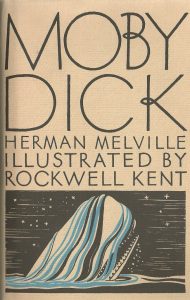
Moby-Dick; or The Whale Book Cover
Moby Dick might be the world’s most famous fiction whale. This epic novel written by Herman Melville revolves around Ahab, the captain of a whaling ship (Pequod) on his quest to revenge on Moby Dick who bit off his leg from a previous voyage. After passing through the equator, Ahab finally sights Moby Dick. Ahab launches harpoon boats but is destroyed by the white whale. The next day, Moby Dick is sighted again but the same fate happened to Ahab’s harpoon boats. Once again, on the third day, harpoon boats were sent but was destroyed again by Moby Dick. Furthermore, Moby Dick sinks the Pequod killing Ahab and his crew.
Moby Dick was challenged by a school district in Texas because it was said to conflict the “community values.” Content wherein it had conflict with the community values includes: the selling of human heads, stereotypical racism, the killing of whales, and the death of many sailors.
Book: Native Son
Author: Richard Wright
Year of Publication: 1940
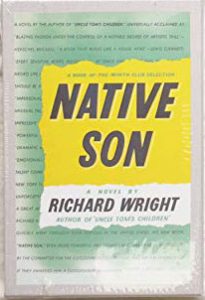
Native Son Book Cover
Native Son pertains to a poor, uneducated, twenty-year-old black man named Bigger Thomas. Bigger prefers to partake in robberies rather than to take a job from a rich white man named Mr. Dalton. Bigger sees white people not as individuals but rather a natural oppressive force pressing down on him. Eventually, Bigger takes the job as a chauffeur for the Daltons. One night, Bigger drives Mary (Mr. Dalton’s daughter) and Jan (his communist boyfriend) to a restaurant in the South Side where all three of them got drunk. Too drunk to make it to her bedroom, Mary is assisted by Bigger up the stairs. Drunk and aroused, Bigger starts to kiss Mary. Just as he places Mary to bed, Mary’s blind mother, Mrs. Dalton enters the bedroom. Worried that Mary would make a noise and reveal Bigger’s presence, he covers Mary’s face but accidentally smothers her to death. To cover his tracks, Bigger throws her body at the fireplace. After a long hiding and a dramatic shoot-out, he is arrested. Surprisingly, Jan (Mary’s boyfriend) enlists his friend Boris A. Max to defend Bigger pro bono. Max tries to save Bigger from the death penalty but failed to do so. Even though Bigger evidently killed Mary, Max argues that Bigger’s actions is just a product of his racist environment. Bigger was sentenced to death.
Native Son is mainly challenged due to its content that has concepts of violence, sex, and profanity.
Book: Our Bodies, Ourselves
Author: Boston Women’s Health Book Collective
Year of Publication: 1971
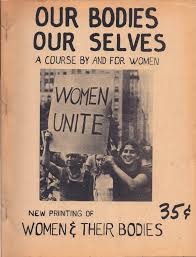
Our Bodies, Ourselves Book Cover
In the midst of the feminist movement in the United States, Our Bodies, Ourselves was written by a group of 11 women who formed a group called the Doctors Group. The book is a collection of topics about women’s health including childbirth, abortion, birth control, sexuality etc. The book was written in a non-technical language for a more comprehensive medical information. The book also has sequels such as Our Bodies, Ourselves: Pregnancy and Birth, and Our Bodies, Ourselves: Menopause.
West Virginia Monongalia County banned books relating on sex education in the late 1970s. Our Bodies, Ourselves was included in those banned books for being “pornographic, encouraging homosexuality and filth.” Conservative organizations such as Eagle Forum, Education Research Analysts, and the Moral Majority consistently challenge the book. Moreover, a conservative magazine, Intercollegiate Review, placed it on one of 50 worst books of the century.
Book: The Red Badge of Courage
Author: Stephen Crane
Year of Publication: 1895
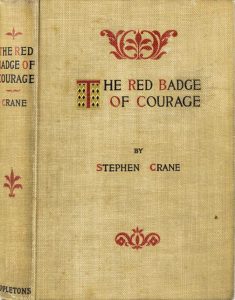
The Red Badge of Courage Book Cover
The Red Badge of Courage is symbolized in book as the blood that proves of the soldier’s valorous behavior. The main protagonist of the novel is Henry Fleming, a recent recruit of the 304th Regiment, who questions his own courage. Throughout the book, he is always seen as coward, running to safety. Later in the novel, he joins a column of badly wounded soldiers walking down the road. He is deeply envious of these men for their Red Bad of Courage: their blood/wounds. At this point in the book, most of Henry’s fellow soldiers have already died. When the regiment proceed back to the battlefield, Henry fights like a lion thinking of his dead comrades. His lieutenant even said that they could win the war in a week if they have ten thousand Henrys. The book ends with Henry feels ashamed of his cowardice actions and reflects on his experience in the war.
Violence, war, and death were the main reasons why The Red Badge of Courage was banned. It was very much expected for a civil war novel, however, author Stephen Crane did not have prior experience in writing such book. Due to this inexperience, he disgraced real soldiers. The book was dismissed to be inappropriate for kids and teen. Parents did not want their children to read a book that can change their views and can give them wrong ideas that could negatively influence their futures.
Book: The Scarlet Letter
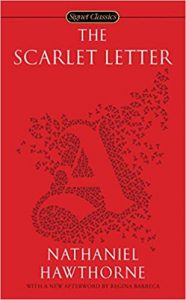
The Scarlet Letter Book Cover
Author: Nathaniel Hawthorne
Year of Publication: 1850
The Scarlet Letter opens with a nameless narrator discovering a number of documents, among these documents includes a manuscript bundled with a scarlet patch of cloth with a golden embroidery the shape of a letter “A.” The narrator, who has recently lost his job at the customs, decided to write a fictional novel based on the events recorded in the manuscript. His output: The Scarlet Letter.
The Scarlet Letter is about how a woman handled what is supposed to be a symbol of shame to a powerful symbol of her identity. The story of the book begins with an adulterous woman named Hester Prynne carrying Pearl, her illegitimate daughter, on her chest. The letter “A” can be clearly seen on her breast reminding her that she is an adulterer. The novel later reveals that it was the local minister who had the adulterous affair with Hester. The story continues as she successfully transformed the meaning of the letter on her chest from “adulterer” to “able.”
Morality, obscenity, and conflicts with community values are the main reasons for The Scarlet Letter’s banning. One cannot be surprised of 1850s people’s moralist outrage for a scandalous book wherein the main protagonist is a adulterous woman who had an affair with a local minister creating a child born out of wedlock and eventually leaves her abusive husband. However, in the present time, it is of question why the book is still banned.
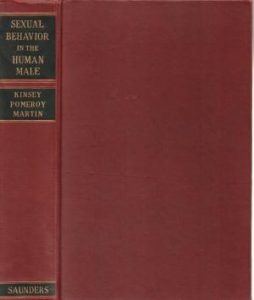
Sexual Behavior in the Human Male Book Cover
Book: Sexual Behavior in the Human Male
Author: Alfred C. Kinsey
Year of Publication: 1948
Sexual Behavior in the Human Male, alongside the Sexual Behavior in the Human Female, are thousands of interviews Alfred C. Kinsey and his colleagues collected, detailing questions about the sexual background of the participants. These findings, also known as the Kinsey Reports, was gathered from the sexual experiences of the participants. Kinsey was said to also engaged in assorted sexual practices with various members of the research team and was not merely gathering data and research purposes. Moreover, he engaged in various forms of heterosexual and homosexual intercourse, including filming various sexual positions in the attic of his home. As per Kinsey’s order, men could have sex with each other, wives could be freely swapped, and wives could choose whichever sexual partner they desired.
Kinsey used a scale in his research from 1 to 6, wherein 1 is exclusively heterosexual and 6 is exclusively homosexual. Here are some of the facts Kinsey concluded from his research:
- 69% of white males in the United States had sex with a prostitute
- about half of all married males have intercourse with women other than their wives some time while they are married
- 37% of males had homosexual physical contact to the point of orgasm at least once
Obviously, sexual content is the main reason for banning the Sexual Behavior in Human Male. The book was the first of its kind and remains a controversy until today.
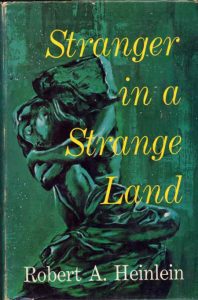
Stranger in a Strange Land Book Cover
Book: Stranger in a Strange Land
Author: Robert A. Heinlein
Year of Publication: 1961
How does it feel to be in a place where you are supposed to belong but feels to be a Stranger in a Strange Land? That is the conflict of the main protagonist of the novel: Valentine Michael “Mike” Smith. Mike was born on Mars to two Earthlings of the first expedition to Mars. Mike, as the lone survivor of the expedition, was raised by Martians. He is about 25 years old when a second expedition takes him home to Earth. Earth has already saw the third world war and is now ruled by the Federation High Council. The story continues how Mike adjusted and adapted to the life on Earth as he was an alien in his own planet. Later in the novel, Mike creates a religion based on Martian philosophy: the Church of All Worlds. This philosophy is similar to the hipsters movement int the 1960s which involves nudity, communal living, copious free love, and a message of peace. The novel ennds with the killing of Mike by members of a rival church. Mike lives on as an archangel in the afterlife.
Stranger in a Strange Land was banned due to its inappropriate adult themes such as sexuality, drugs, and suicide. However, it was later retained. Promotion of free love and communal living also led to its banning in many places.
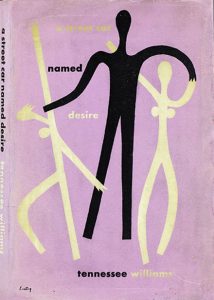
A Streetcar Named Desire Book Cover Book Cover
Book: A Streetcar Named Desire
Author: Tennessee Williams
Year of Publication: 1947
A Streetcar Named Desire follows the conflict among Blanche DuBois, Stella (pregnant at the time being) and Stanley Kowalski. Blanche seeks refuge to the apartment of the Kowalskis after a series of personal loses – the loss of their family home, death of her young husband, and loss of her teaching job. When she arrived at the Kowalskis’ flat, conflict between her and Stanley quickly arises. Stanley later finds out about the story behind her late husband’s death. After Blanche finds out that her husband is homosexual, she taunted him and punished him and later her husband committed suicide.
Blanche meets Mitch, one of Stanley’s poker buddies, on a drunken poker party hosted by the Kowalskis. She got under Stanley’s nerves when she starts to win Mitch’s affection. Mitch and Blanched talked for a while in the bedroom, Stanley storms to the bedroom and throws a radio outside the window. Stella, dismayed with her husband’s actions, yells at him. Stanley beats her up. The poker game ends, the men try to stop the beating, and the sisters escapes to their upstairs neighbor Eunice’s apartment. After a short while, Stanley cries for forgiveness which she quickly gives.
Blanche’s birthday eventually comes. Stanley gives her a gift: a one-way bus ticket back to Laurel. Disturbed with his action, an imminent fight is about to erupt but is quickly prevented by the labor of the pregnant Stella. Several hours later, Stanley finds a deeply drunk and alone Blanche. This is the climax of the play, where Stanley rapes Blanche. Unable to believe that Stanley raped Blanche, Stella places her in an insane asylum. The play ends with Stella sobbing for what she did to her sister as she holds her newborn child in her arms and Stanley comforts her with flowery words.
The play is banned from being performed in high schools due to its explicit depictions of earthy sexuality. Furthermore, the play also shows the inappropriate ideas such as domestic violence, rape, alcohol abuse, sexual promiscuity, homosexuality, and suicide.
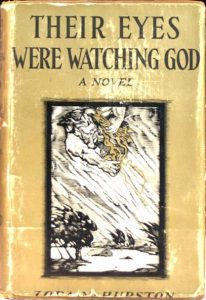
Their Eyes Were Watching God Book Cover
Book: Their Eyes Were Watching God
Author: Zora Neale Hurston
Year of Publication: 1937
Their Eyes Were Watching God follows the story of Janie Crawford, an attractive middle-aged woman, and her multiple marriages as she tells it to her friend Pheoby Watson.
Janie is abandoned by her mother but is luckily raised by her grandmother. Her grandmother wants her to marry a husband who can provide her security and social status as soon as possible and finds Logan Killicks, a much older farmer, to marry her. Janie is miserable after moving in with the unromantic old man. One day, she meets a suave man named Joe Starks and runs off and marries him. Eventually, Janie feels choked by his successful yet controlling husband and leaves him. Joe later dies after becoming quite ill. With the newfound independence, she accommodates suitors and starts dating Tea Cake. Two years later, a hurricane hit the Everglades which forced the couple to flee. As they are desperately running away, a rabid dog bites Tea Cake. He eventually falls ill due to the rabies. And in a moment of madness, he becomes convinced that Janie is cheating on him and starts shooting pistol at her. Janie is forced to kill his husband for her own sake. She is immediately put on trial but is found not guilty. The story ends as she returns to Eatonville.
Surprisingly, negative reviews of the novel came from black critics and essayists. Characters in the book are speaking in a offensive phonetic dialect which mocked how English was spoken among the black community. Accounts of sexual explicitness and language gave rise to challenges and banning of the book.
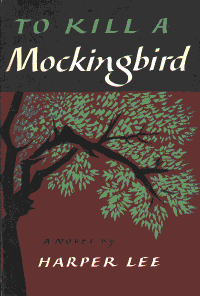
To Kill a Mockingbird Book Cover
Book: To Kill a Mockingbird
Author: Harper Lee
Year of Publication: 1960
To Kill a Mockingbird takes place in the Great Depression. It centers around the Finch family who are reasonably well off compared to the rest of the society. Atticus, the father of Scout and Jem, is a prominent lawyer. In the summer, Scout and Jem befriend Dill, a boy who live in their neighborhood for the summer. They ventures to the spooky house owned by Mr. Nathan Radley and occupied by the mysterious Arthur “Boo” Radley.
Meanwhile, Atticus agrees to represent and defend a black man named Tom Robinson, who has been accused of rape by a white woman named Mayella. Atticus proves that Tom did not commit the crime and Mayella’s wounds on her face was caused by the beating of his father, Bob, after being caught with Tom. However, Tom is still convicted of the crime by the all-white jury.
Enraged by the shame caused by Atticus, Bob attempts to attack Scout and Jem as they walk home from a Halloween party. However, Boo intervenes and eventually kills him. Finally, Scout realizes her father’s advice to look at other’s perspective and practice sympathy.
The book’s strong language including the concepts of sexuality, rape, profanity, and racism are the main reasons for its banning. “It makes people uncomfortable”, said by the Biloxi School Board. The book sparked hate crimes in libraries, creating 36 total reports of hate crimes.
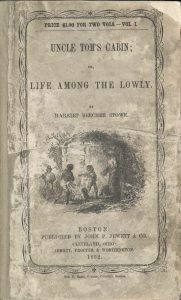
Uncle Tom’s Cabin Book Cover
Book: Uncle Tom’s Cabin
Author: Harriet Beecher Stowe
Year of Publication: 1852
Drowning in large debts, unknowingly to his husband Arthur, Emily Shelby decides to raise money by selling two of his slaves to a slave trader named Mr. Haley: Uncle Tom and the young son of Mrs. Shelby’s maid Eliza. Hearing about the sale, Eliza warns them and flees with them to the North in the hopes of freedom in Canada.
Meanwhile Uncle Tom departs with the party on the boat where he meets and befriends a little white girl named Eva. Later, Eva falls into the river, and without no hesitation, Tom plunges into the water to save her. Grateful for saving his daughter, Augustine St. Clair agrees to buy Uncle Tom from Mr. Haley. Uncle Tom travels with the St. Claires back to their home in New Orleans.
Loker, a slave hunter, is hired by Mr. Haley to track down Eliza and her companions. In an attempt to catch them, he was shot in the side by Eliza’s husband Master George. She brings Loker with them to the Quakers to heal him.
Two years later, Eva grows very ill and dies. Due to this, Augustine decides to free Uncle Tom. But Augustine is stabbed to death unable to free Tom. Marie St. Claire sells Tom to a cruel plantation owner, Simon Legree. Uncle Tom meets Legree’s sex slaves, Cassy and Emmeline. He encourages both ladies to escape, in which they did. Legree orders his oversees to beat Tom after refusing to tell where the two ladies escaped. When he is near death, George Shelby arrives with money to buy Tom, but he is too late. The story ends where Cassy realizes that Eliza is her long-lost daughter. The family decides to move to Liberia. George frees all of his remaining slaves in honor of Uncle Tom’s memory.
After the publication of Uncle Tom’s Cabin, it was banned in the South for being anti-slavery. During the modern era, some libraries or high schools in the United States have banned it due to “inappropriate language” such as the use of the n-word to pertain to slaves.
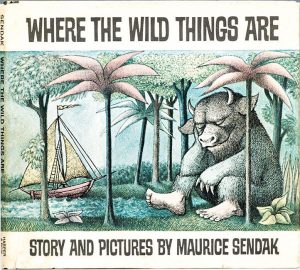
Where the Wild Things Are Book Cover
Book: Where the Wild Things Are
Author: Maurice Sendak
Year of Publication: 1963
Where the Wild Things Are, a children’s book, centers a young, naughty, and mischievous Max who just chased a dog with a fork. His mother calls him a “wild thing” and sends her to bed without eating dinner. Enraged and hungry, the bedroom of Max starts to turn into a jungle. A boat then appears and sails to where the wild things are, a place of huge monsters with claws and horns. Max hangs out with these monsters until he starts to miss her mother’s love. Notably, it was adapted into a film in 2009.
Where the Wild Things Are is believed to be psychologically damaging and traumatizing to children. Psychologists even dismissed it as “too dark” for children. Additionally, challenges against the book were brought up for its images of witchcraft and supernatural elements.
Book: The Words of César Chávez
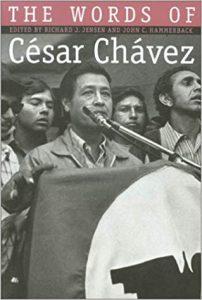
The Words of Cesar Chavez Book Cover
Author: Cesar Chavez
Year of Publication: 2002
César Chávez is an American labor leader and civil rights activists. He is famously known for co-founding the United Farm Workers union (originally National Farm Workers Association). The Words of César Chávez is the culmination of his teachings, researches, lectures, and writings in 25 years.
The banning of The Words of César Chávez became controversial when Tucson Unified School District completely disband its Mexican-American Studies program. It was dismissed as racially divisive which is against a state law. Moreover, it “promoted racism and classicism against Anglos.”

